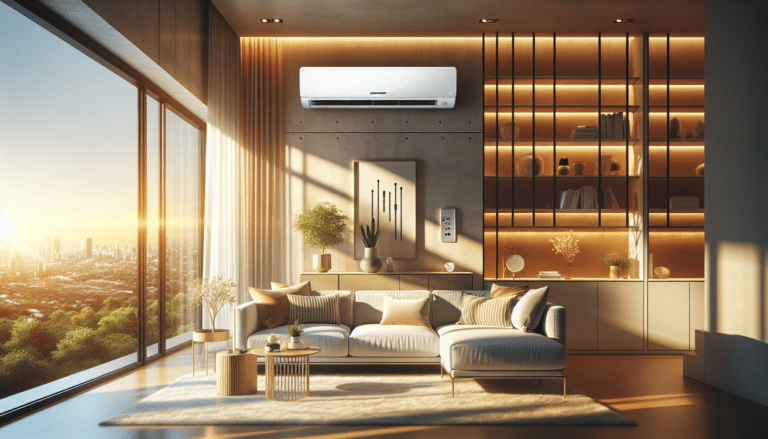Understanding Split Air Conditioning Systems
Split air conditioning systems have gained popularity among homeowners and businesses alike for their efficiency, flexibility, and cost-effectiveness. Unlike traditional centralized systems, split air conditioners, commonly known as ductless systems, consist of two main components: an indoor unit and an outdoor condenser. This separation allows for more precise temperature control in individual areas, making them ideal for both residential and commercial spaces.
The Ductless Air Conditioning Benefits
One of the standout features of split air conditioners is their ductless design. This eliminates the need for extensive ductwork, which can lead to energy losses of up to 30%. Ductless systems offer numerous benefits, including:
– **Energy Efficiency**: Ductless air conditioning systems often come with higher SEER (Seasonal Energy Efficiency Ratio) ratings, ensuring lower energy costs.
– **Zoned Cooling**: Homeowners can control the temperature in different rooms independently, leading to greater comfort and reduced energy wastage.
– **Installation Flexibility**: The minimal need for ductwork allows for easier installation in both new constructions and retrofits.
Choosing the Right Air Conditioner Unit
Selecting the right air conditioning unit is crucial for achieving optimal performance and energy efficiency. When shopping for a mini-split system, consider the following factors:
1. **Size Matters**: Proper sizing of the air conditioning unit is essential to avoid overheating or overcooling a space. An undersized unit will struggle to maintain cool temperatures, while an oversized unit can lead to short cycling and increased energy costs. Consulting the [Air Conditioner Installation Essentials](https://example.com) guidelines can help with selecting the appropriate unit size.
2. **Energy Efficiency Ratings**: Look for models with high energy efficiency ratings. Understanding air conditioning energy ratings explained will offer insight into potential cost savings.

3. **Indoor Units Options**: Mini-split systems offer various indoor units or air handlers tailored to suit different room sizes and aesthetic preferences.
Air Conditioner Installation Costs Overview
Before settling on a split air conditioning system, it’s essential to understand the installation costs involved. While upfront costs might seem high, energy savings and improved comfort can justify the investment. The typical installation costs for mini-split systems can range significantly based on factors such as:
– Number of indoor units
– The complexity of installation
– Existing infrastructure
– Location
Be sure to gather multiple estimates and check air conditioner customer reviews ratings to find a reputable installation service.
Air Conditioning System Maintenance Tips
Proper maintenance of your air conditioning system ensures longevity and optimal performance. Here are a few essential maintenance tips:
– **Regular Filter Inspection**: Check and replace filters every 1-3 months to improve air quality and prevent strain on the system.
– **Clean the Outdoor Unit**: Debris can obstruct airflow. Regular cleaning helps maintain efficiency.
– **Schedule Professional Maintenance**: A qualified technician can perform detailed inspections and identify potential issues before they escalate.
Common Air Conditioning Problems and Fixes
Even the best air conditioning systems can encounter problems. Familiarizing yourself with common air conditioning problems and their fixes can save homeowners time and money:
– **System Not Cooling**: This issue could point to a refrigeration problem or dirty filters.
– **Unusual Noises**: Grinding, squealing, or rattling noises can indicate mechanical problems or loose parts. Seek professional help for any irregular sounds.
– **Increased Energy Bills**: If you notice a spike in energy costs, it may indicate inefficiency that needs addressing.
Air Conditioner Repairs Guide
When faced with the need for air conditioner repairs, it’s crucial to follow a structured guide:
1. **Identify Signs of Malfunction**: Keep an eye out for common issues, such as limited airflow, odd noises, or frequent cycling.
2. **Consult Professional Help**: Engaging a qualified technician for air conditioning repairs can prevent minor issues from becoming major problems.
3. **Regular Maintenance Records**: Keeping a log of maintenance and repairs assists in identifying patterns or recurring issues that could need further investigation.
Improving Air Conditioner Efficiency
Enhancing the efficiency of your air conditioning system not only leads to energy savings but also prolongs the lifespan of the unit. Here are a few methods to improve air conditioner efficiency:
– **Programmable Thermostats**: These devices allow for the scheduling of temperature changes based on daily habits.
– **Regular Inspections**: Following HVAC system maintenance and repair schedules can uncover issues that reduce efficiency.
– **Seal Ducts and Insulation**: Ensuring proper insulation and sealing ductwork can prevent energy loss, particularly in older homes.
Commercial Air Conditioning Services Maintenance
For businesses, maintaining optimal indoor temperatures is paramount for productivity and customer comfort. Engaging commercial air conditioning services can help ensure that your system runs smoothly with the following best practices:
1. **Regular Maintenance Contracts**: Establishing contracts for routine checks can prevent costly downtimes.
2. **Energy Management Systems**: Implement systems that monitor usage and help identify areas for improvement.
3. **Upgrade Equipment**: Consider air conditioner equipment upgrades when performance falls below optimal levels or when addressing energy consumption goals.
Understanding Ductwork Alternatives: Ductless Systems
The push for energy-efficient solutions has resulted in more homeowners exploring ductless systems as an alternative to traditional ducted systems. Ductless options can provide significant savings on installation and energy costs. However, they come with their own set of pros and cons, which should be evaluated:
– **Ductless Air Conditioning Pros**: Easier installation, increased energy efficiency, and the ability to heat and cool specific areas.
– **Ductless Air Conditioning Cons**: Higher initial costs compared to conventional systems and aesthetic concerns related to indoor units.
By thoroughly investigating and considering these factors, homeowners can harness the full potential of split air conditioning services while enjoying the comforts of a well-tempered environment, regardless of season.
